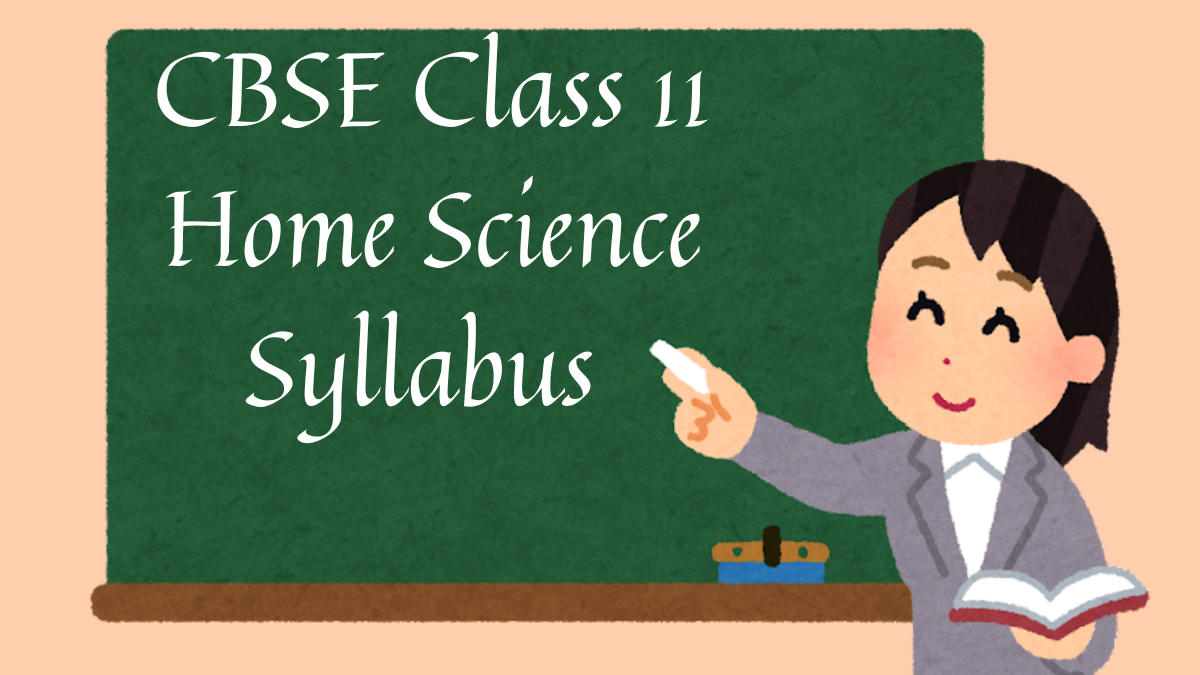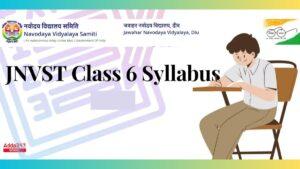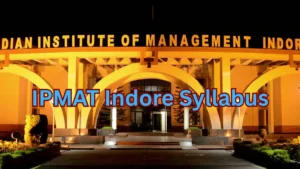The Central Board of Secondary Education has released the latest CBSE Class 11 Home Science Syllabus 2024-25 on its official website. Home Science is one of the most crucial subjects for the students who opt Arts stream in the Class 12th Standard. The CBSE Class 11 home Science Syllabus 2024-25 is based on basically five areas namely, Foods and Nutrition,
Human Development and Family Studies, Fabric and Apparel, Resource Management and Communication and Extension. Students having Home science as a major subject in the class 12 curriculum can check the detailed unit-wise syllabus & marks distribution as well as the practical exam topics on this page.
CBSE Class 11 Home Science Syllabus 2024-25
Understanding the CBSE Class 11 Home Science Syllabus 2024-25 is essential for effective study and exam preparation. It gives a clear path for your studies, allowing you to concentrate on the most important subjects and increase your chances of success.Learning home science aims to create self-awareness and understanding of one’s position as a productive member of family, community, and society. Prepare your study plan in accordance with the Class 11 home science syllabus, which will help you flourish in your preparation.
Marks Distribution of CBSE Class 11 Home Science Syllabus
Home Science Class 11 Syllabus 2024-25 provides important details such as question paper design, course organization, marking distribution, and more. The total marks of the Class 11 Home Science paper is 100 marks which is divided into the Theory exam (80 Marks) and practical exams (30 Marks) Check out the unit wise marks distraction in the table below.
| No. | Units | Marks |
| 1 | Introduction to Home Science | 2 |
| 2 | Understanding oneself: Adolescence | 20 |
| 3 | Understanding Family, Community, and Society | 15 |
| 4 | Childhood | 15 |
| 5 | Adulthood | 18 |
| Total | 70 | |
| Practical | 30 | |
| Grand Total | 100 |
CBSE Class 11 Home Science Syllabus 2024-25 PDF Download
BSE has published the most recent syllabus for all students enrolled in the 2024-2025 academic year on its official website. Students in class 11 can access the current CBSE Class 11 Home Science Syllabus 2025 PDF online via their website or the direct link provided below.
Unit wise Home Science Class 11 Syllabus 2024 25
The Class 11 Home Science Syllanis 2024-25 CBSE Board has been divided into five units discussing various aspects. Students having this subject must cover and grasp the concept of the units in a good manner to excel in their exam scores. Check out the Class 11 Home science Syllanu Units and the topics included in them at a glance.
UNIT I: INTRODUCTION TO HOME SCIENCE
- What is Home Science
- Areas of Home Science
- Home Science is important for both boys and girls
- Career Options of Home Science
UNIT II: UNDERSTANDING ONESELF: ADOLESCENCE
Unit II focuses on the stage of adolescence – the stage of life to which you belong at present. This unit deals with understanding your self in terms of your personal and social identity, your nutritional and health requirements, management of basic resources of time and space, fabrics around you, and your communication skills. The last chapter of the unit situates the adolescent in the context of the family and larger society, thereby linking it to the next unit that deals with the individual about her/his family, school, community and society.
CHAPTER: UNDERSTANDING THE SELF
- What is Self?
- Personal dimension
- Social dimension
- Self- concept
- Self-esteem
- What is Identity?
- Personal identity
- Social identity
- Self during Infancy: Characteristics
- Self during early childhood: Characteristics
- Self during middle childhood: Characteristics
- Self during Adolescence: Characteristics
- Identity development
- Identity crisis
- Real vs Ideal self
- Influences on identity
- Developing a sense of self and identity
- Influences on the formation of identity
- Biological and physical changes
- Socio-cultural context
- Emotional changes
- Cognitive changes
CHAPTER: FOOD, NUTRITION, HEALTH AND FITNESS
- Introduction
- Definition of
- Food
- Nutrition
- Nutrients
- Balanced diet
- Definition
- RDA
- Health and Fitness
- Using Basic food Groups for planning Balanced Diets
- Food guide
- Vegetarian food Guide
- Dietary Patterns in Adolescence
- Irregular meals and skipping meals
- Snacking
- Fast foods
- Dieting
- Modifying diet-related behaviour
- Diet journal
- Exercise
- Substance use and abuse
- Healthy eating habits
- Snacks
- Drinking water
- Factors influencing eating behaviour
- Eating disorders at adolescence
- Key terms and their meaning
CHAPTER: MANAGEMENT OF RESOURCES
- Introduction
- Classification of resources
- Human /non-human resources
- Individual/shared resources
- Natural / community resources
- Human and non-human resources
- Human resources
- Knowledge
- Motivation/ interest
- Skills/ strength/ aptitude
- Time
- Energy
- Non-human resources
- Money
- Material resources
- Individual and shared resources
- Individual resources
- shared resources
- Natural and community resources
- Natural resources
- community resources
- Characteristics of resources
- Utility
- Accessibility
- Interchangeability
- Manageable
- Managing Resources
- Management process
- Planning
- Steps in planning
- Organising
- Implementing
- Controlling
- Evaluation
CHAPTER: FABRIC AROUND US
- Definition of yarns, fibres, textile products, finishing.
- Introduction to fibre properties
- Classification of textile fibres
- Filament/staple fibres
- Natural/Manufactured (manmade) fibres
- Types of Natural Fibres
- Cellulosic fibres
- Protein fibres
- Mineral fibres
- Natural rubber
- Types of Manufactured Fibres
- Regenerated cellulosic fibres
- Modified cellulosic fibres
- Protein fibres
- Non-cellulosic fibres
- Mineral fibres
- Some Important fibres and their properties
- Cotton
- Linen
- Wool
- Silk
- Rayon
- Nylon
- Polyester
- Acrylic
- Elastomeric fibres
- Yarns
- Yarn processing
- Cleaning
- Making into a sliver
- Attenuating, drawing out and twisting
- Yarn terminology
- Yarn number
- Yarn twist
- Yarn and thread
- Fabric production
- Weaving
- Knitting
- Braiding
- Nets
- Laces
- Textile Finishing
- Finishing with colour
- Printing
CHAPTER-MEDIA COMMUNICATION TECHNOLOGY
- Communication and Communication Technology
- What is Communication
- Classification of communication
- How does communication takes place
- What is media
- Media classification and functions
- What is communication technology
- Classification of communication technologies
- Modern communication technologies
UNIT III: UNDERSTANDING FAMILY, COMMUNITY AND SOCIETY
The chapters in Unit II were all addressed to you for the understanding of self and of the factors that influence your decision-making. Let us now move on to understanding the family, the community and the society that you are a part of.In the first section- the focus will be on relationships and interactions with significant others, i.e. those important to you in these contexts. The second section- will discuss concerns and needs, such as those of health, work, resources, education and textile tradition in the adolescent‟s diverse social contexts.
CHAPTER: CONCERNS AND NEEDS IN DIVERSE CONTEXTS
- NUTRITION, HEALTH AND HYGIENE
- Health and its Dimensions
- Social health
- Mental health
- Physical health
- Health care Indicators of Health
- Nutrition and Health
- Importance of nutrients
- Factors affecting nutritional well being
- Food and nutrient security
- Care for the vulnerable
- Good health for all
- Safe environment
- Nutritional Problems and their consequences
- Malnutrition
- Under nutrition
- Over nutrition
- Hygiene and Sanitation
- Personal Hygiene
- Environmental Hygiene
- Food Hygiene
- Water safety-Qualities of potable water, methods of water purification(Boiling, chlorine, storage and electric filter ,RO)
B.RESOURCES AVAILABILITY AND MANAGEMENT
- Time Management
- Definition of time plan
- How good is your time management (Activity)?
- Steps in making time plan
- Tips for effective time management
- Tools in time management—Peak load period, Work curve, Rest/break periods, Work simplification
- Space Management
- Space and the home
- Principles of space planning
UNIT IV: CHILDHOOD
The theme of this unit is „Childhood‟. You may wonder why did the book address the adolescent years first and childhood later. Well, it is because if you as an adolescent understand issues about yourself first, it would be easierto grasp the issues that are concerned with the stage of childhood, and later with adulthood. In this unit you will be studying about children‟s growth and development, critical concerns about their health and nutrition, education and clothing. As we would like children with disabilities to be an inclusive part of our society, the chapters provide us important information on their needs and ways to meet them.
CHAPTER: SURVIVAL GROWTH AND DEVELOPMENT
- The meaning of survival
- Growth and development
- Areas of development
- Physical development
- Motor development
- Cognitive development
- Sensory development
- Language development
- Social development
- Emotional development
- Good Nutrition
- Stages in development
- Neonate
- Reflexes
- Sensory capabilities
- Development across stages from infancy to adolescence
- Physical and motor development
- Language development
- Socio –emotional development
- Cognitive development
- Mental processes involved in thinking
- Stages of cognitive development
- Sensory motor stage
- Pre-operational stage
- Concrete operational stage
- Formal operational stage
CHAPTER: NUTRITION, HEALTH AND WELL-BEING
- Introduction
- Nutrition, Health and Well-being during infancy (birth – 12 months)
- Dietary requirements of infants
- Breast feeding
o Benefits of breast feeding
- Feeding the low birth weight infants
- Complementary foods
- Guidelines for complementary feeding
- Immunization
- Common health and nutrition problems in infants and young children
- Nutrition, Health and well-being of preschool children (1-6 years)
- Nutritional needs of preschool children
- Guidelines for healthy eating for preschoolers
- Planning balanced meals for preschool children
- Some examples of low-cost snacks
- Feeding children with specific needs
- Immunization
- Nutrition, Health and well-being of school-age children (7-12 years)
- Nutritional requirements of school children
- Planning diets for school-age children
- Factors that influence diet intake of preschool-age and school- age children
- Healthy habits
- Health and nutrition issues of school age children
CHAPTER: OUR APPAREL
- Clothing functions and the selection of clothes
- Modesty
- Protection
- Status and prestige
- Adornment
- Factors affecting selection of clothing in India
- Age
- Climate and season
- Occasion
- Fashion
- Income
- Understanding children‟s basic clothing needs
- Comfort
- Safety
- Self help
- Appearance
- Allowance for growth
- Easy care
- Fabrics
- Clothing requirements at different childhood stages
- Infancy (birth to six months)
- Creeping age (6 months to one year)
- Toddlerhood (1-2 years)
- Preschool age (2-6 years)
- Elementary school years (5-11 years)
- Adolescents (11-19 years)
- Clothes for children with special needs
UNIT V: ADULTHOOD
With the advent of adulthood, the adolescent passes through the portal of what may be termed as the “real world”. One enters the world of higher education, work and marriage, and gets involved in establishing one‟s own family. Hence responsibilities of the individual increase manifold. In this unit you will learn about the major factors that play a role in determining the quality of adult life, these being health and wellness, financial planning and management, maintenance of fabrics and apparel that one uses personally as well as in the home, and appreciation of different perspectives in communication. The unit concludes with the chapter on individual responsibilities and rights, not only for one‟s own self, but also in relation to the family and larger society.
CHAPTER: HEALTH AND WELLNESS
- Importance of health and fitness
- Healthy & Unhealthy diet
- BMI
- Do‟s and Don‟ts for health promoting diets
- Fitness
- Importance of exercise and physical activities in adulthood
- Wellness
- Qualities of a person who is rated high on wellness
- Dimensions of wellness
- Social aspect
- Physical aspect
- Intellectual aspect
- Occupational aspect
- Emotional aspect
- Spiritual aspect
- Environmental aspect
- Financial aspect
- Stress and coping with stress
- Simple techniques to cope with stress
- Relaxation
- Talking with friends/family
- Reading
- Spirituality
- Music
- Hobby
- Yoga
CHAPTER: FINANCIAL MANAGEMENT AND PLANNING
- Financial management
- Financial planning
- Management
- Money and its importance
- Family Income
- Money income
- Real income: Direct and Indirect income
- Psychic income
- Income management
- Budget
- Steps in making budget
- Advantages of planning family budgets
- Control in money management
- Checking to see how well the plan is progressing
- Mental and mechanical check
- Records and accounts
- Adjusting wherever necessary
- Evaluation
- Savings
- Investment
- Principles underlying sound investments
- Safety to the principle amount
- Reasonable rate of interest
- Liquidity
- Recognition of effect of world conditions
- Easy accessibility and convenience
- Investing in needed commodities
- Tax efficiency
- After investment service
- Time period
- Capacity
- Savings and investment avenues
- Post office
- Banks
- Unit Trust of India
- NSC
- Mutual funds
- Provident funds
- Chit fund
- Life insurance and medical insurance
- Pension scheme
- Gold, house, land
- Others (new schemes)
- Credit
- Need of credit
- 4C‟s of credit: character, capacity, capital means, collateral,
CHAPTER: CARE AND MAINTENANCE OF FABRICS
- Mending
- Laundering
- Stain removal
- Vegetable stains
- Animal stains
- Oil stains
- Mineral stains
- Dye bleeding
- Techniques of stain removal
- Scraping
- Dipping
- Sponging
- Drop method
- Reagent for stain removal
- Common stains and method of removing
- Stain removal
- Removal of dirt: the cleaning process
- Soaps and detergents
- Methods of washing: friction, kneading & squeezing, suction, washing by machine
- Finishing
- Blues and optical brighteners
- Starches and stiffening agents
- Ironing
- Dry cleaning
- Storage of textile products
- Factors affecting fabric care
- Yarn structure
- Fabric construction
- Colour and finishes
- Care label
Practical Syllabus of Home Science Class 11
The importance of the Class 11 Home science Practical Exam is very significant as it will help you to boost your marks. Check out the List of Particles included the home science syllabus.
1. Understanding oneself with reference to:
a) Physical development in terms of age, height, weight, hip and chest circumference.
b) Sexual maturity (Age at menarche, Development of breasts: girls). Growth of beard, change in voice: boys)
2. Observe developmental norms: (Physical, Motor, Language and social – emotional) birth to three years.
3. List and discuss 4-5 areas of agreement and disagreement with
a) Mother
b) Father
c) Siblings/ Friends
d) Teacher
4. a) Record own diet for a day
b) Evaluate qualitatively for adequacy
5. Preparation of different healthy snacks for an adolescent suitable in her/his context.
6. a) Record one day‟s activities relating to time use and work
b) Prepare a time plan for yourself
7. Plan a budget for a given situation/purpose.
8. a) Record the fabrics and apparel used in a day
b) Categorize them according to functionality
9. Relationship of fibre properties to their usage:
a) Thermal property and flammability
b) Moisture absorbency and comfort
10. (a) Analyze label of any one garment with respect to: Clarity, fiber content, size andcare instructions.
(b) Prepare one care label of any garment.
(c) Analyze two different fabric samples for color fastness.
Scheme for practical examination 30 Marks
| Sections | Marks |
| 1. Observe developmental norms: (Physical, Motor, Language and social emotional) birth to three years. 5 marks
OR List and discuss 4-5 areas of agreement and disagreement with |
5 marks |
| 2. Preparation of healthy snacks for an adolescent. | 9 marks |
| 3. Plan a budget for a given situation/purpose. | 3 marks |
| 4. Prepare a time plan for yourself. | 3 marks |
| 5. Relationship of fibre properties to their usage: a) Thermal property and flammability b) Moisture absorbency and comfort OR Prepare one care label of any garment. |
5 marks |
| 6. File Submission | 5 marks |
| 7. Viva | 2 marks |
Prescribed textbooks for Class 11 Home Syllabus
Check out the prescribed books that are exclusively prepared in, line with the CBSE Class 11 Home Science syllabus.
- Human Ecology and Family Sciences (For class XI): Part I
- Human Ecology and Family Sciences (For class XI):Part II
| Related posts: | |
| Class 11 Political Science Syllabus 2024-25 | CBSE Class 11 Psychology Syllabus 2024-25 |
| CBSE Class 11 Hindi Syllabus 2024-25 | Class 11 Sociology Syllabus 2024-25 |









 CUET BEd Syllabus 2026, Check Subject Wi...
CUET BEd Syllabus 2026, Check Subject Wi...
 Navodaya Syllabus for 6th Class PDF Down...
Navodaya Syllabus for 6th Class PDF Down...
 IPMAT Indore Syllabus 2026: Section-wise...
IPMAT Indore Syllabus 2026: Section-wise...









